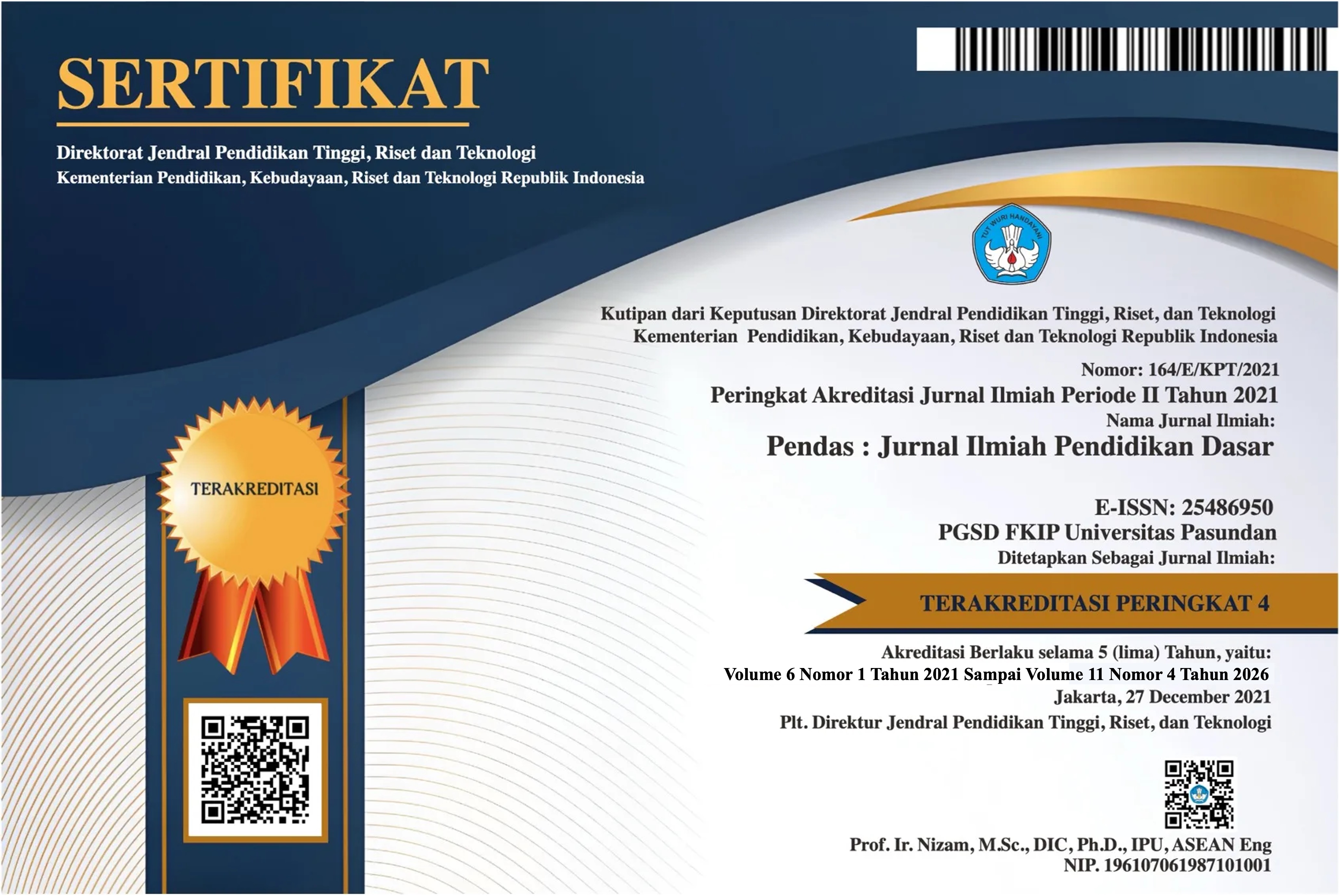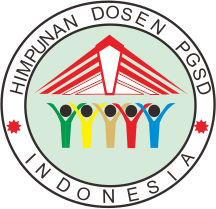THE RELATIONSHIP BETWEEN FOREIGN LANGUAGE ANXIETY AND SELF-CONFIDENCE OF 11th GRADE STUDENTS IN LEARNING ENGLISH AT SMKS 1 TAMANSISWA PEMATANGSIANTAR
DOI:
https://doi.org/10.23969/jp.v10i04.34936Keywords:
Foreign Language Anxiety, Self-Confidence, Learning EnglishAbstract
This research aimed to investigates the relationship between foreign language anxiety and self-confidence among 11th grade students learning English at SMKS 1 Tamansiswa Pematangsiantar, a vocational high school in Indonesia. Foreign language anxiety (FLA), encompassing communication apprehension, test anxiety and fear of negative evaluation, is known tu hinder language acquisition, while self-confidence suppoots persistence and willingness to communicate in the target language. Using Horwitz et al’s Foreign LanguageClassroom Anxiety Scale (FLCAS) and Park and Lee’s Self-Confidence Questionnaire, data were collected from 45 eleventh grade students during the 2025/2026 academic year. The results reveal a strong and significant negative correlation ( r = -0.880, p < 0.001) between foreign language anxiety and self-confidence. Most sudents experienced moderate to high anxiety and low self-confidence, which negatively impacted their English learning outcomes. The findings support the affective filter hypothesis, indicating that anxiety reduces self-confidence and limits language engagement. Recommendations focus on anxiety reduction and confidence building interventions in the classroom such as supportive teaching methods, collaborative activities and positove feedback to enhance students’ English proficiency and future career readiness.
Downloads
References
Al-Hebaish, S.M. (2012). The correlation between general self-confidence and academic achievement in the oral presentation course, Theory and practice in language studies. Vol 2, No. 1, p. 60-65.
Arikunto, S. (2010). Prosedure penelitian: Suatu penelitian praktik (Revised ed). Rineka Cipta.
Bailey, K. (1983). Psychological factors affecting drug toxicity. Regulatory Toxicology and Pharmacology, 3(4), 389-398. https://doi.org/10.1016/0273-2300(83)90009-0
Bian, G., Zhang, X., & Dong, Y. (2022). Autonomic nervous system response patterns of test-anxious individuals to evaluative stress. Frontiers in Psychology, 13, Article 824406. https://doi.org/10.3389/fpsyg.2022.824406
Brown, H. D. (2021). Principles of Language Learning and Teaching (7th ed.). Pearson Education.
Brown, H. Douglas. (2007). Teaching by principles: An interactive approach to language pedagogy, p. 73, 212-351. New York: Pearson Education, Inc.
Clement, Dornyei and Noel, K (2001). Motivation, Self-Confidence, and group Cohesion in the Foreign Language Classroom Language Learning, vol. 1. P.42-54.
Clement, R., & Kruidenier, B. G. (1985). Willingness to communicate in a second language: The effects of context, norms, and validity. Journal of Language and Social Psychology, 4(1), 29-49.
Chaves Yuste, B., de la pena, C., & Perez Agustin, M. (2024). Improvement in the EFL learning process in VET styudies. A structural equations model of affective variables: English language anxiety, willingness to communicate and self-efficacy in English. LEARN Journal: Language Education and Acquisition Research Network, 17(1), 759-788. https://doi.org/10.26803/learn.17.1.41
Dewaele, J.-M., & MacIntyre, P. D. (2023). Advances in foreign Language anxiety research. Annual Review of Applied Linguistics, 43, 15-36. https://doi.org/10.1017/s0267190522000220
Dewaele, J.-M., & MacIntyre, P. D. (2023). Foreign language anxiety: Past, present, and future. Language Teaching, 56(1), 1-17.
Dewaele, J.-M., & MacIntyre, P. D. (2020). The predictive power of language anxiety and enjoyment for second language achievement: A review of recent research. Studies in Second Language Learning and Teaching, 10(1), 137-157.
Dewaele, J.-M., MacIntyre, P. D., & Boudreau, C. (2022). The relationship between anxiety, self-confidence, and willingness to communicate in a foreign language system, 104, 102691.
Guiora, A.A. (1983). The psychological basis of language learning: in A. Wenden & J. Rubin (Eds), Learner Strategies in Language Learning, 47-61.
Heatherton, T. F. & Polivy, J. (1991). Development and validation of a scale for measuring state self-esteem. Journal of Personality and Social Psychology, 60, 895-910.
Holzman, J. F., & Bridgett, D. J. (2017). Heart rate variability indices as biomarkers of top-down self-regulatory mechanisms: A meta-analytic review. Neuroscience & Biobehavioral Reviews, 74, 233-255.
Horwitz, E. (2001). Language anxiety and achievement. Annual of Applied Linguistics, 21(2), 112-126. https://doi.org/10.1017/s0267190501000071
Horwitz, E. K. (2020). Foreign language anxiety and its impact on communication apprehension, test anxiety, and fear of negative evaluation in language learning.
Horwitz, E. K. (2020). On the nature of foreign language anxiety. In M. S. Gkonou, M. Daubney, & J.-M. Dewaele (Eds.), New Insights into Language Anxiety: Theory, Research and Educational Implications (p. 31-47). Multilingual Matters.
Horwitz, E. K., Horwitz, M. B., & Cope, J. (2018). Foreign language classroom anxiety. In C. Gkonou, M. Daubney, & J.-M. Dewaele (Eds.), New Insights into Language Anxiety: Theory, Research and Educational Implications (pp. 128-140). Multilingual Matters.
Horwitz, E. K., Horwitz, M. B., & Cope, J. (1986). Foreign language classroom anxiety. The Modern Language Journal, 70(2), 125-132. https://doi.org/10.2307/327317
Krashen, S. (1981). Second language acquisition and second language learning. Oxford: Pergamon Press.
Li, C., Dewale, J. M., et al . (2022). The predictive effects of foreign language enjoyment, anxiety, and boredom on general and domain-specific English achievement in online English classrooms. Frontiers in Psychology. https://doi.org/10.3389/fpsyg.2022.1050226
Liu, M. (2021). Anxiety in English language learning among Chinese university students: Causes and coping strategies. Asian-Pacific Journal of Second and Foreign Language Education, 6(1), 1–14.
Liu, M. (2021). Foreign language classroom anxiety, gender, discipline, and English test performance: A cross-lagged regression study. The Asia-Pacific Education Researcher, 31(3). https://doi.org/10.1007/s40299-020-00550-w
Liu, M., & Jackson, J. (2022). An exploration of language anxiety and its effects on communication skills in the EFL classroom. System, 102, 102744. https://doi.org/10.1016/j.system.2021.102744
Liu, M., & Jackson, J. (2022). Foreign language classroom anxiety and its relationship with students’ language achievement. TESOL Quarterly, 56(2), 345–369.
MacIntyre, P. D., & Doucette, J. (2022). Exploring self-confidence and willingness to communicate in a second language. In P. D. MacIntyre & J. Doucette (Eds.), Language Learning and Emotional Experience (p. 45-67).
MacIntyre, P. D., & Doucette, J. (2022). Self-confidence and language learning: Theoretical perspectives and practical implications. Language Teaching Research, 26(4), 591–608.
MacIntyre, P. D. & Gardner, R. C. (1994). The subtle effects of language anxiety on cognitive processing in the second language. Language Learning, 44(2), 283-305. https://doi.org/10.1111/j.1467-1770.1994.tb01103.x
MacIntyre, P. D., Gregersen, T., & Mercer, S. (2021). Language learning psychology: Research, theory, and pedagogy. Language Teaching, 54(2), 147–163.
MacIntyre, P. D., Gregersen, T., & Mercer, S. (2021). Positive psychology in SLA: New directions in research and teaching. Routledge.
Maclntyre, P. D., Clement, R., Dornyei, Z., & Noels, K. A. (1998). Conceptualizing Willingness to Communicate in a L2: A Situational Model of L2 Confidence and Affiliation. Modern Language Journal, 82(4), 545-562. https://doi.org/10.1111/j.1540-4781.1998.tb05543.x
Marwan, A. (2016). Investigating students' foreign language anxiety. Malaysian Journal of ELT Research, 3(1), 19.
Ministry of Education and Culture of the Repbulic of Indonesia. (2020). The 2013 Curriculum for Junior High Schools and Senior High Schools. https://kurikulum.kemendikbud.go.id
Park, G., & Lee, S. (2005). Self-confidence questionnaire for English speaking performance.
Park, H. I., & Lee, A. R. (2005). L2 learners’ anxiety, self-confidence and oral performance. Proceedings of the 10th Conference of Pan-Pacific Association of Applied Linguistics, 107-118.
Park, H., & Lee, A. R. (2005). L2 learners’ anxiety, self-confidence and oral performance. In E. Hinkel (Ed.), Handbook of Research in Second Language Teaching and Learning (p. 197-213).
Ratnasari, D. (2021). Foreign language anxiety and self-confidence among vocational high school students in Indonesia. Indonesian Journal of English Language Teaching, 16(2), 45–59.
Rubio, F.D. (2007) Self-esteem and foreign language learning: An introduction. In F.D. Rubio (ed) Self-esteem and Foreign Language Learning. Newcastle: Cambridge Scholars Publishing (p. 2-12).
Scovel, T. (1978). The effect of affect on foreign language learning: A review of the anxiety research. Language Learning, 28(1), 129-142.
Scovel, t. (1998). Psychology of Second Language Acquisition. Oxford University Press.
Spielberger, C. D. (1978). State-trait anxiety inventory. In C. D. Spielberger (Ed), Anxiety: Current trends in theory and research (Vol. 1, p. 1-23). Academic Press. (as cited in Horwitz, E. K., 2001).
Teimouri, Y., Goetze, J., & Plonsky, L. (2020). Foreign language anxiety and foreign language performance: A meta-analysis. Language Learning, 70(4), 877-912. https://doi.org/10.1111/lang.12410
Teimouri, Y., Goetze, J., & Plonsky, L. (2020). Second language anxiety and achievement: A meta-analysis. Studies in Second Language Acquisition, 42(2), 363–387.
Teimouri, Y., Goetze, J., & Plonsky, L. (2021). Self-confidence as a protective factor against foreign language anxiety among language learners. Frontiers in Psychology, 12, Article 790648. https://doi.org/10.3389/fpsyg.2021.790648
Teimouri, Y., Plonsky, L., & Goetze, J. (2021). The interface between foreign language anxiety and self-confidence in language learning. Language Learning, 71(4), 1058–1087.
Yoshie, M., Kudo, K., Murakoshi, T., & Ohtsuki, T. (2009). Music performance anxiety and heart rate variability: The effect of musical tempo. Journal of Psychologycal Anthropology, 28(4), 123-128.
Zhang, X., et al. (2024). Cognitive perspective on anxiety in language learning.
Zhou, Y., et al. (2025). Context-specific nature of foreign language anxiety.
Zhou, L., Y., and lochtman, K. (2020). The relationship between second language competence and willingness to communicate. The moderating effect of foreign language anxiety. https://doi.org/10.1080/01434632.2020.1801697
Downloads
Published
Issue
Section
License
Copyright (c) 2025 Pendas : Jurnal Ilmiah Pendidikan Dasar

This work is licensed under a Creative Commons Attribution 4.0 International License.


















